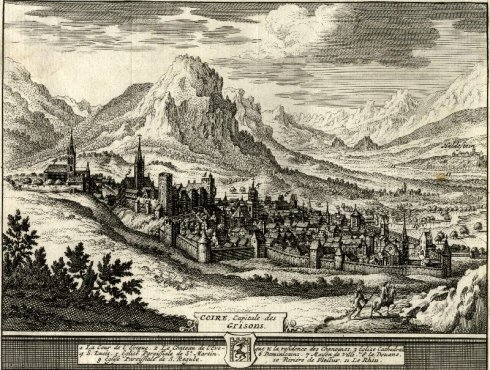Chur at the time of the baroque
The appearance of the town changed little, although the two fires of 1674 (10.03.1674, 70 houses and 68 stables burned, 14 people killed and several others injured, and 15.05.1674, 7 houses and 10 stables burned) caused greater destruction.
Fires were widely considered as punishment for contempt of the Word of God and for sins and vices. After the town fire of 1674, the Catholics in Chur were accused of the crime, collectively so to speak. Even before the fire, voices were raised that the
Graubünden city would sink into ashes if the people of Chur did not convert. Others thought that the fire had been set by witches. Even the council members were accused of being sorcerers, because they would protect the witches. In view of the impending torture, however, all these statements were denied. Their own survival was too much at stake, for whoever knew too much was suspected of dealing with the devil himself.
Finally, a tramp was convicted and arrested as the culprit of the fire, but the accusation that Catholic clergymen themselves had started the fire had not yet been forgotten, which is why (probably among other reasons) no new Catholic tenants were accepted in Chur after 1675, and those who had already settled were expelled.[41] The building activity, however, took hold in Chur.
Building activity, meanwhile, reached beyond the city walls, and the Baroque was expressed in four detached mansions with formal gardens, as well as in the interior decoration of many burghers' houses. At the end of the 17th century, a Latin school and a Collegium musicum were established. Moreover, German theater troupes passing through, occasional opera performances, as well as foreign envoys and the prince-bishop provided some glamor to the Rhaetian capital.
Impressum und rechtliche Hinweise
- Köhl family graves in the Chur city garden
- Chur at the time of the baroque
- The dependents of Chur
